There are several approaches to feeding dogs: commercial dog food (wet, dry, and raw dog food), home-prepared food, and raw home feeding. Each of these methods is a personal choice (cost and availability), and some investigation is required for all ways to ensure that the dog is getting the right balance of nutrition in its food.
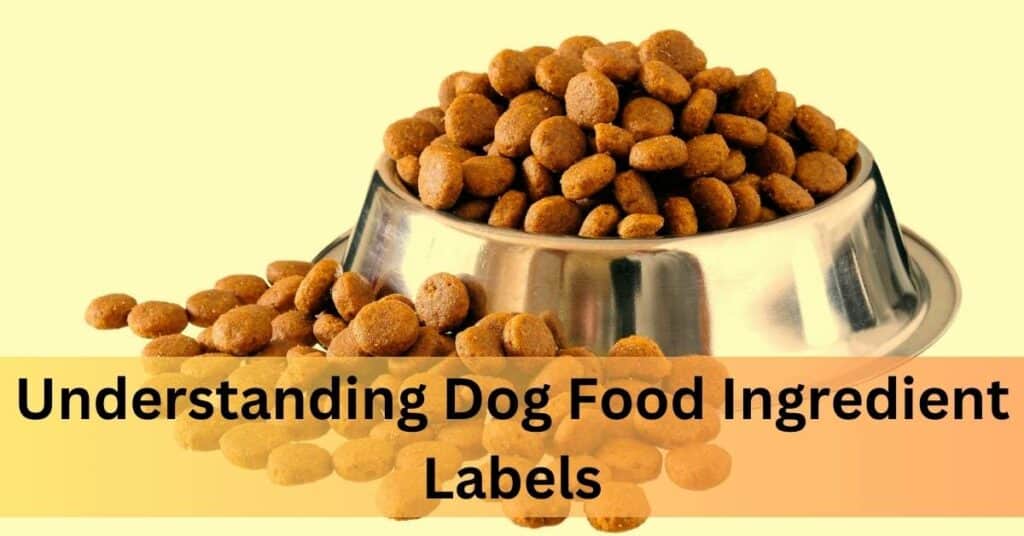
Commercial Dog Food Marketing
Marketing for commercial dog food is intense, and many larger companies care more about profit than good nutrition for the dogs. Poor quality ingredients and unethical practices have resulted in new, better quality dog food companies appearing (however, some larger companies have started mimicking these ethical companies to get into the market with poorer quality food – reading the ingredients for commercial dog food is a must). More people are realising that the dog’s diet plays a significant role in a dog’s health and questioning the quality of commercial food.
Understanding the Ingredient Labels on Dog Food
Understanding what the ingredients mean allows you to choose the best commercial dog food for your budget – this applies to commercial dry food and wet food. Checking what the cooked meat is preserved in is an additional concern with wet food – too much salt can have severe consequences for the dog’s health.
Straightforward ingredients are the best choice, with no colouring additives and long chemical names. These can be more expensive; however, they tend to have more nutrition compacted and may be more cost-effective in the long run. Your dog won’t need to eat as much of it as it would a cheaper version with less nutritional value and more filler. It will mean fewer vet visits, so saving on vet bills should also be considered.
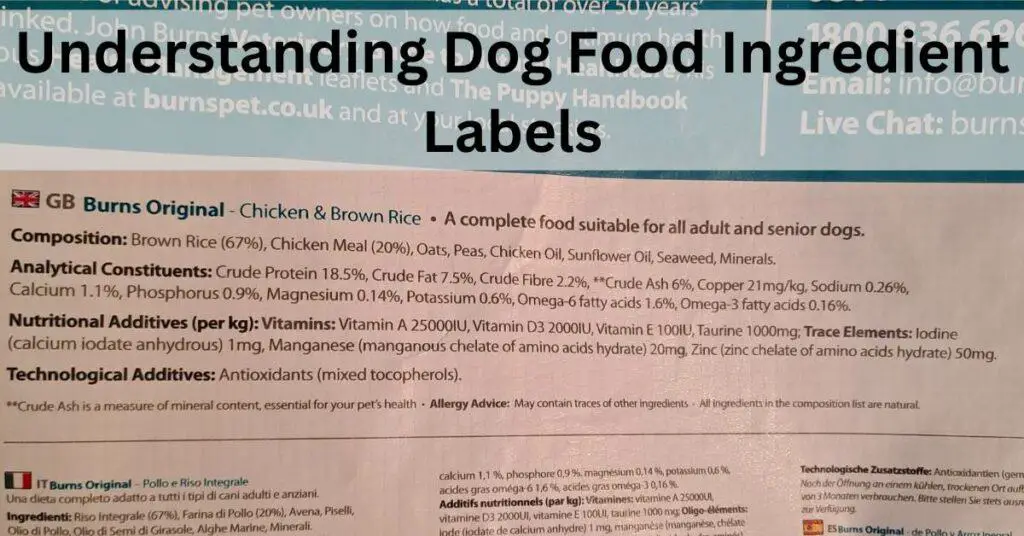
What the Ingredient List Terminology Means
Not all commercial dog food is nutritious and good for our dogs – the law in the United Kingdom (Food Standards Agency) says that manufacturers must list the ingredients (done in categories and percentages – it doesn’t have to be specific), labeling can also draw attention to, or the absence of particular substances, and those must not be misleading; however, manufacturers have developed shady/hazy wording for ingredient lists to baffle people into thinking they are buying nutritional food for their pets. Poor quality food is causing poor health for dogs.
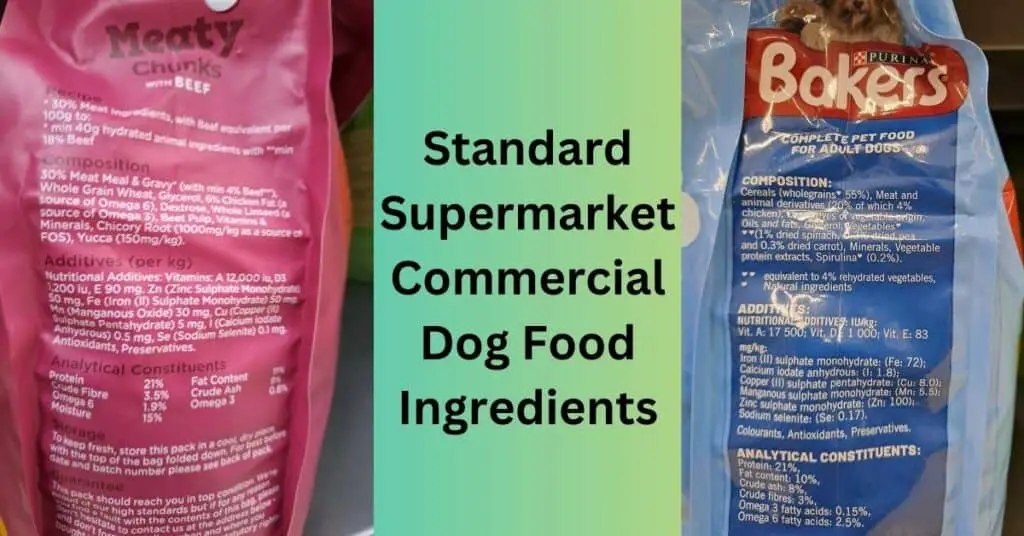
Knowing manufacturers’ terminology ensures you can select the best food for your dog. In the ingredients:
Pure or fresh “beef”, “chicken”, “duck”, and “fish” means precisely that and are accompanied by the cooking method.
Derivatives (most common) means that they derive from and don’t specify what part of the animal has been used. For example, chicken derivatives can encompass bones, feet, and beaks – it isn’t specific about what part of the chicken is used. The same applies to any meat source labeled as a derivative in the ingredients.
Meat Derivatives used in the ingredients don’t specify what animal source the meat is coming from, and often is a mixture of different animal sources. It also doesn’t identify what parts of the animal are used. This also makes it impossible to determine how much nutritional value is in the food.
Meal refers to bone meal, which is finely ground bone and other animal parts – a cheap and readily available bulking agent – the nutritional value is unclear; it claims to add calcium to dog food.
Hydrolysed animal protein is a protein of an animal broken down to its smallest form, touted as hypoallergenic because it prevents the immune system from recognising the substance and rejecting it. The animal or body part is unspecified.
Although dogs are dairy intolerant, dairy produce is added to some foods and treats to make them more palatable.
Sugar beet is often included as a fibre; the sugar is usually removed; however, there is debate about whether this is suitable for dogs.
Fat is necessary in a dog’s diet; however, spraying fat from unspecified animal sources is a questionable practice to make it more appealing to dogs rather than a nutritional additive.
Vegetable derivatives are included in the same way that meat derivatives are. If it is pure vegetables, they will be listed and are better for your dog than derivatives.
Until recently, many dog foods relied heavily on wheat and grain as a filler – it is cheap and fills the dog up. However, the adverse effects of grains in dog foods have made many manufacturers use Rice instead, which is deemed safer for dogs.
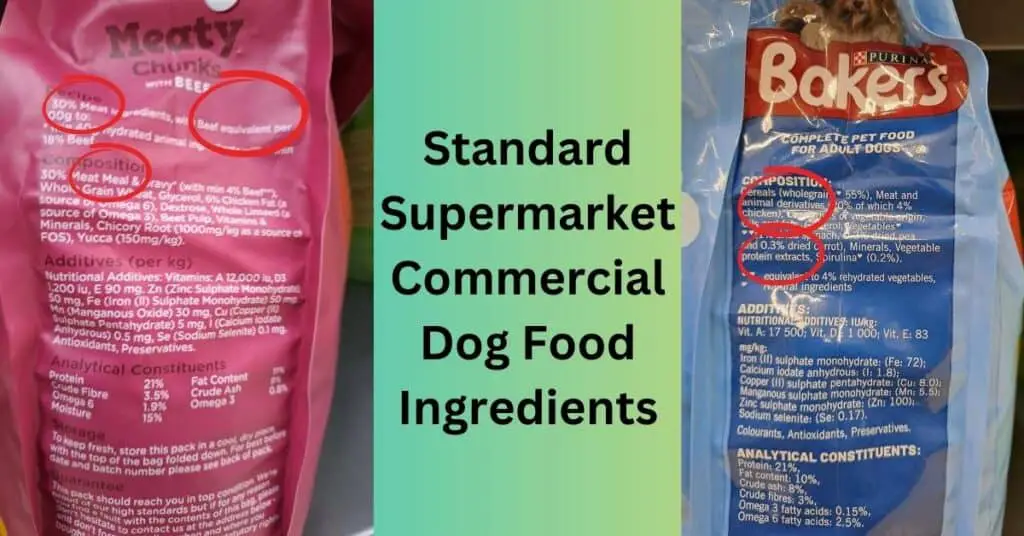
Botanicals or Plants, which include herbs added to the dog food, are usually found in higher-priced dog foods and are included as a health enhancement.
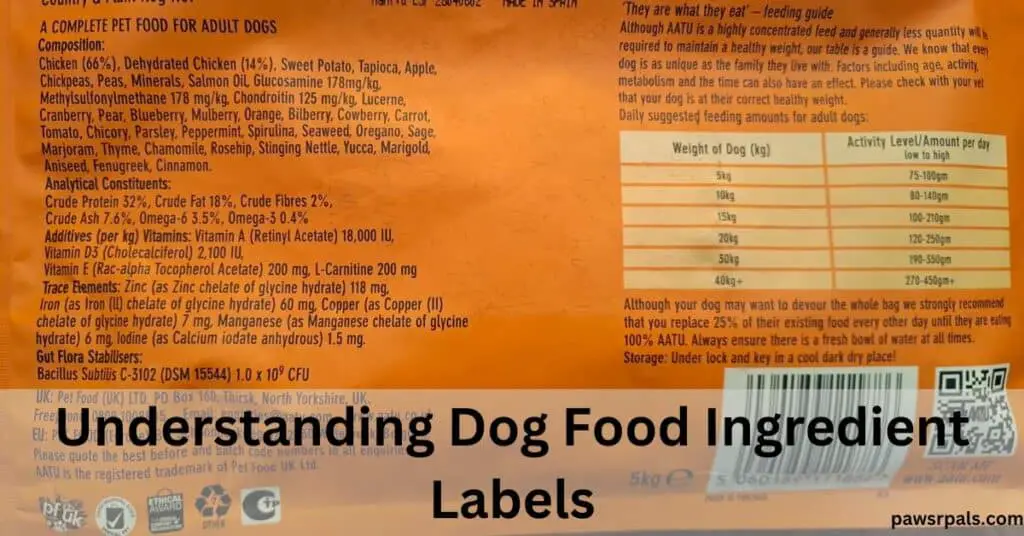
Food Toppers for Dog Food
Adding steamed vegetables, fruit, or peelings can top up the dog’s food bowl, along with higher-quality food, if it looks too empty. A mixture of commercial dry food and home-cooked food can benefit a dog’s health, adding extra nutrition to the dog’s diet.
Alternating different meat and fish ensures that the dog receives a variety of vitamins, minerals, fats, and oils in their diet throughout the week. Table scraps of dog appropriate food can also be added to the food bowl.
Care should also be taken when choosing treats for the dog – always check the ingredients for the same things as the dog food – healthy treats such as carrots, apples, blueberries, and bananas are just as good, if not better, than commercial treats full of additives and colouring.
Home Made Dog Food
Preparing a dog’s food completely at home allows complete control of the nutritional food the dog is consuming. Knowing that each meal should contain 50% cooked meat or fish, 25% steamed vet or fruit, and 25% cooked grain (oatmeal or rice) should get the balance right – alternating different meats, fish, fruit and vegetables allows a variety of vitamins and minerals into the diet.
This method reduces the chances of allergy buildup in dogs prone to allergies. Using quality ingredients ensures that the dog receives the best nutrition; supplements (especially calcium) may need to be added to the food.
Dogs should not have cooked or weight-bearing bones – these can cause internal blockages or broken teeth – however, a carrot will give the dog something to chew, clean the teeth, and provide added vitamins and minerals.
Toxic Food For Dogs
Some foods are toxic to dogs and should never be included in their diet – onions, grapes, raisins, sultanas, macadamias, yeast (yeast dough), raw eggs, dairy products, lots of fatty trimmings, and xylitol (sweetener found in many foods and products).
Chocolate and caffeine are also highly toxic to dogs – cocoa mulch garden fertiliser should also be avoided as it contains methylxanthine. When a dog ingests methylxanthine, it isn’t poisoned once, but many times as the body reabsorbs the chemical and the dog is repeatedly poisoned by it. Symptoms include:
- vomiting
- hyperactivity
- restlessness
- touch hypersensitive
- rapid heartbeat and breathing
- muscle tremors
- loss of control of leg muscles
- seizures
- general weakness
- coma, and if left untreated, can be fatal for the dog.
Raw Feeding for Dogs
Raw feeding is becoming more popular (so much so that many commercial dog food manufacturers are selling it – again, be aware of the quality of commercial raw foods); many people state that feeding raw has improved the overall condition of their dog.
Careful handling, storage, and cleaning up with raw feeding must be considered to avoid bacteria and cross-contamination. You must also consider the raw feeding options if your dog has to go into kennels or stay with someone else for a while.
Supplements will also have to be added to a raw diet. When giving a dog a raw bone, it shouldn’t be a weight-bearing joint or left lying around to prevent the spread of bacteria or encourage guarding issues (high-value resource).
Raw bones should only be given when under supervision, and be aware that they can splinter and cause internal blockages or break teeth. Overfeeding bones can also risk excessive calcium intake, which can cause health issues for the dog.
Final Word on Understanding Food Labels on Dog Food
Getting quality food for your dog isn’t always easy or affordable. Often, the food we buy heavily depends on what you can afford – I know and understand this. I’m in the same boat. However, by carefully selecting food with minimum additives and topping up with dog-friendly healthy food (dogs are scavengers by nature), you can ensure your dog gets the nutrition it needs at a cost you can afford!
I hope you found this article helpful. I have written more articles you may find interesting, you can find them here:
Is a Raw Diet Good for Huskies and Husky Puppies (This article says Huskies, but applies to other dog breeds too)

Leave a Reply